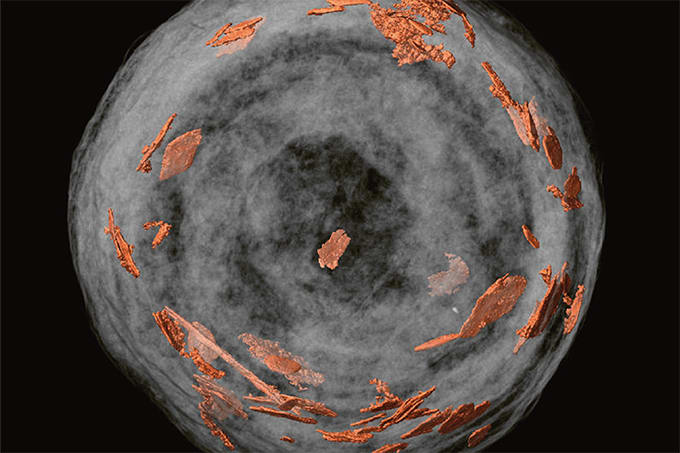
Chromatography sits at the heart of drug discovery and development, but it is rarely straightforward. While silica gel columns are the workhorse for purification, they falter with highly polar organic compounds – the very kind often found in active pharmaceutical ingredients (APIs). The result is time-consuming workarounds, expensive specialty materials, and scale-up bottlenecks that can stall drug candidates.
At Southwest Research Institute (SwRI), a chance observation when the lab's deionized water system went offline led to a new approach: ion-assisted chromatography. By introducing calcium salts into standard chromatography, researchers discovered that extremely polar molecules – including amines, salts, and even peptides – could be separated with surprising efficiency.
Here, Darrel Johnston, Shawn Blumberg, and Travis Menard from SwRI discuss the serendipitous story of ion-assisted chromatography, the role of calcium ions in improving separations, and how the method could accelerate the path from drug discovery to development.
What first inspired your interest in chromatography and purification?
Chromatography is a necessary evil. I've yet to meet a chemist who enjoys performing column chromatography, but when it comes to fast and general purification, it’s by far the most effective method. While we would prefer to use crystallization to purify everything, chromatography is sometimes quicker to develop – at least on a small scale. With fast-paced timelines, we often just need a solution that works well and, more importantly, delivers results quickly. Many of the types of compounds we work with are ammonium salts, which aren’t amenable to traditional chromatography.
The calcium-ion-assisted method has been a major game changer in our purification of charged compounds. It allows us to rapidly – and inexpensively – purify very polar compounds at scale without using crystallization, which often requires significant optimization or specialized modified silica.
Why does silica gel often fail with polar organic compounds?
Silica gel retains polar compounds well during chromatography, but it can be a double-edged sword: the more strongly a compound is retained, the stronger the solvent required to elute it. Eventually, compound polarity reaches a point where there are no remaining suitable solvents to elute the compounds off the chromatography column. As polarity increases, water solubility also tends to increase. More water-soluble drugs have better bioavailability in our bodies. Although this is a desirable trait for any drug substance, it creates challenges from a purification standpoint.
Tell us the story behind your serendipitous discovery…
The discovery came about as we were trying to purify a highly polar ammonium salt for an upcoming preclinical study. We only needed about 20 g of ≥ 96% pure material, but we were unable to get anywhere close to that level of purity. We had two weeks to deliver the desired compound, but developing a crystallization in that timeframe seemed impossible. In response, we reviewed existing literature on thin-layer chromatography systems for amino acids, looking for inspiration on possible chromatographic techniques using silica with highly polar compounds.
From this, we found conditions using aqueous solvent blends on normal-phase silica. However, as our deionized water system was offline, we tried tap water instead. Usually, this is a chemistry faux pas because ion contamination can adversely affect outcomes. In our case, however, the purification results were unexpectedly excellent! We excitedly began scaling the technique, but once our original water system came back online and we returned to using it, the results were no longer as promising. Immediately, we suspected tap water had played a key role in the process, which ultimately led us to the discovery of calcium salts.
What is it about the water in South Texas that made it so special for this discovery?
Most of the freshwater in South Texas has an abundant supply of limestone aquifers. Calcium carbonate, which makes up limestone, is virtually insoluble in water (except for trace amounts). In most cases, any amount of limestone in water is considered unfavourable – as anyone who’s ever had to scrape clean a mineralized showerhead can attest to! As a result, we go to great lengths to ensure the water we use is free of these dissolved minerals and salts. It was by chance that our system malfunctioned while working on a challenging chromatography problem. As we were buffering the tap water with HCl, it reacted with the calcium carbonate to form calcium chloride. A chemist on our team had the insight to realize that our tap water, combined with HCl, could’ve led to the formation of calcium chloride.
Fortunately, calcium chloride is inexpensive and abundant, so we were quickly able to recreate the favourable conditions for chromatography. Just like that, with a little serendipity and South Texas tap water, ion-assisted chromatography was born at SwRI.
After the initial discovery, how did you more fully develop the ion-assisted chromatography method?
SwRI offers internal funding for research and development, which enables scientists and researchers to pursue new and innovative ideas. Following our application, we received both the resources and time needed to further develop the technique.
Chromatography can be time consuming and material intensive, especially when screening hundreds of different conditions. As we needed something both efficient and automated, we turned to high-performance liquid chromatography (HPLC), which allowed us to rapidly screen conditions using very small quantities of samples and solvents. This proved pivotal, and led us to some terrific results. Using the funding, we evaluated over 20 different salts of calcium, sodium, potassium, magnesium, and zinc. Interestingly, we found that no other salts were as effective as calcium – though we did observe that different calcium salts show very diverse levels of performance. We also discovered that the organic solvents we were using with aqueous calcium were not ideal. Fortunately, we found that acetonitrile was a particularly high-performing solvent, offering excellent separations when paired with calcium. Ultimately, calcium trifluoroacetate was the best performing salt – with calcium chloride coming in at a close second.
What role do calcium ions specifically play in improving separations?
As of right now, we’re still working to understand the exact role calcium ions play in the process. The trouble is that large macro systems are very difficult to study, and almost impossible to model. Calcium provides the necessary elution of very polar molecules along the column, but it also seems to have a retentive effect. The calcium ions seem to help retain the molecules in the column so they elute more slowly and separately – it’s something that we’re eager to understand better. We’re hoping that others will try the technique and find it useful, and that as usage grows, more data can be gathered and insights gleaned.
What other steps do you have in mind for the project?
Our two biggest questions now involve determining the technique’s mechanism of action and its efficacy to purify peptides. The mechanistic investigation is somewhat outside our scope of work, but exploring the purification of peptides further is of great interest to us. Peptides are quite difficult to purify, essentially never with standard phase silica. We have seen some success with the peptides we have tested so far, which is promising, but more research needs to be conducted on separating the truncated oligopeptides from its parent.
Moving forward, we’d like to explore this further, and also to improve the method for peptides. To take it to the next level, we will need a ready supply of impure oligopeptides as test cases. Our team is currently working on a publication on this to demonstrate the method’s generality and widespread applicability to many chemical purification challenges.
You were initially studying antidotes to nerve agents and pesticides… is this research still ongoing?
We remain very active in developing countermeasures to organophosphate poisoning. Oximes are one of the types of molecules commonly used to develop reactivators to counteract organophosphates. These compounds are permanently charged ammonium salts, perfectly suited for this method. Our production goal has been to make our oxime compounds 98% pure or higher – at scale. This calcium-enabled chromatography technique has helped tremendously in achieving that goal.
Anything else to add?
With this discovery, it’s impossible to separate the people from the place. Southwest Research Institute sits on 1,500 acres of land that was once a South Texas ranch, which our founder, Thomas Baker Slick Jr., envisioned as a flourishing hub of scientific and technological research. The land, with its natural limestone deposits, was as important to this discovery as the scientists. That said, it’s important to commend SwRI’s robust internal research program, as well as its culture of innovation, for making this discovery possible. At the institute, scientists are encouraged to work on varied projects and to find novel solutions to old problems. Clients come to us because of our multidisciplinary approach to R&D, including our work with drug discovery, purification, formulation and process development.
Darrel Johnston is a Director of Pharmaceuticals and Bioengineering Department at Southwest Research Institute
Shawn Blumberg is a Lead Scientist in Medicinal and Process Chemistry at Southwest Research Institute
Travis Menard is a Research Scientist in Drug Discovery & Development at Southwest Research Institute




